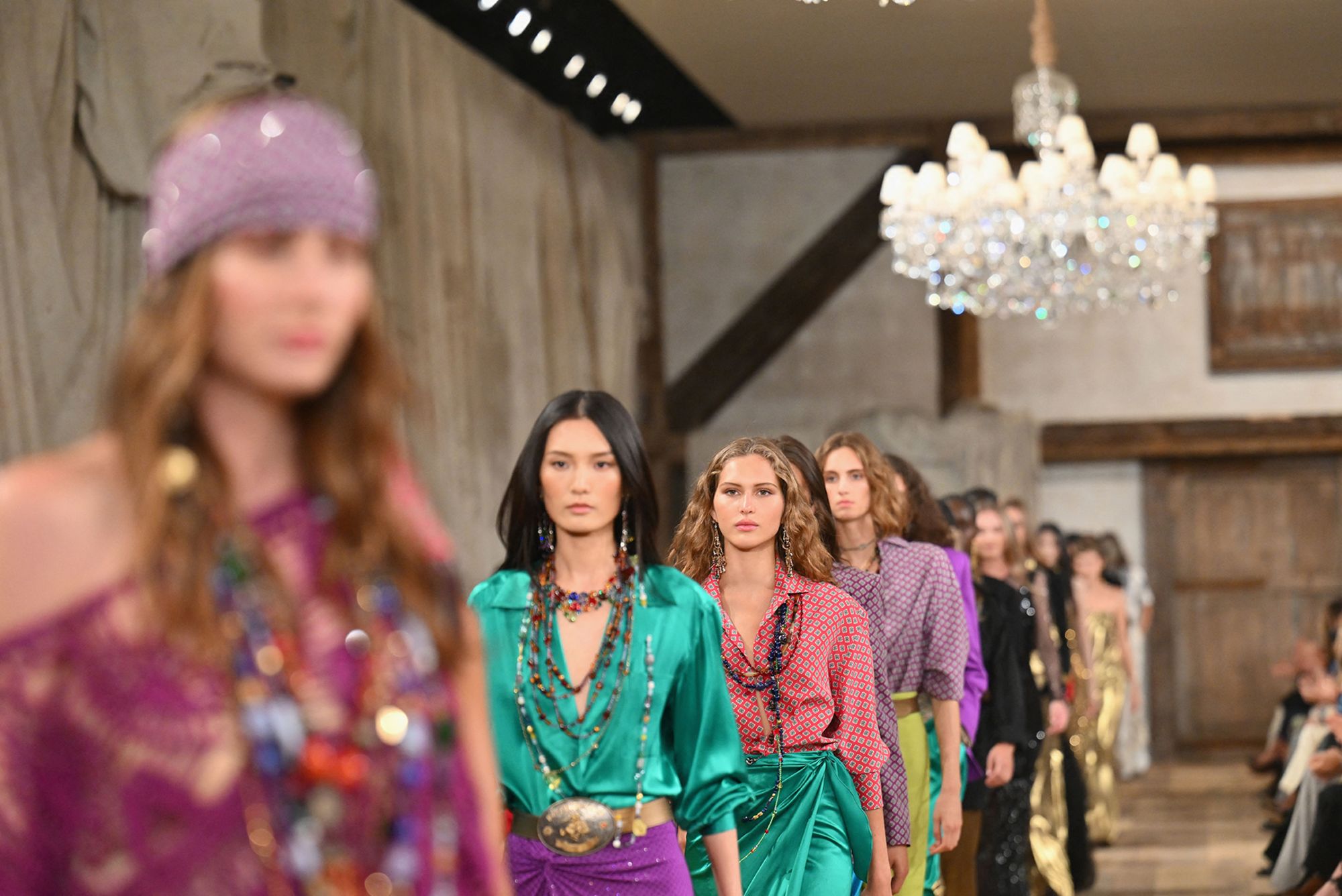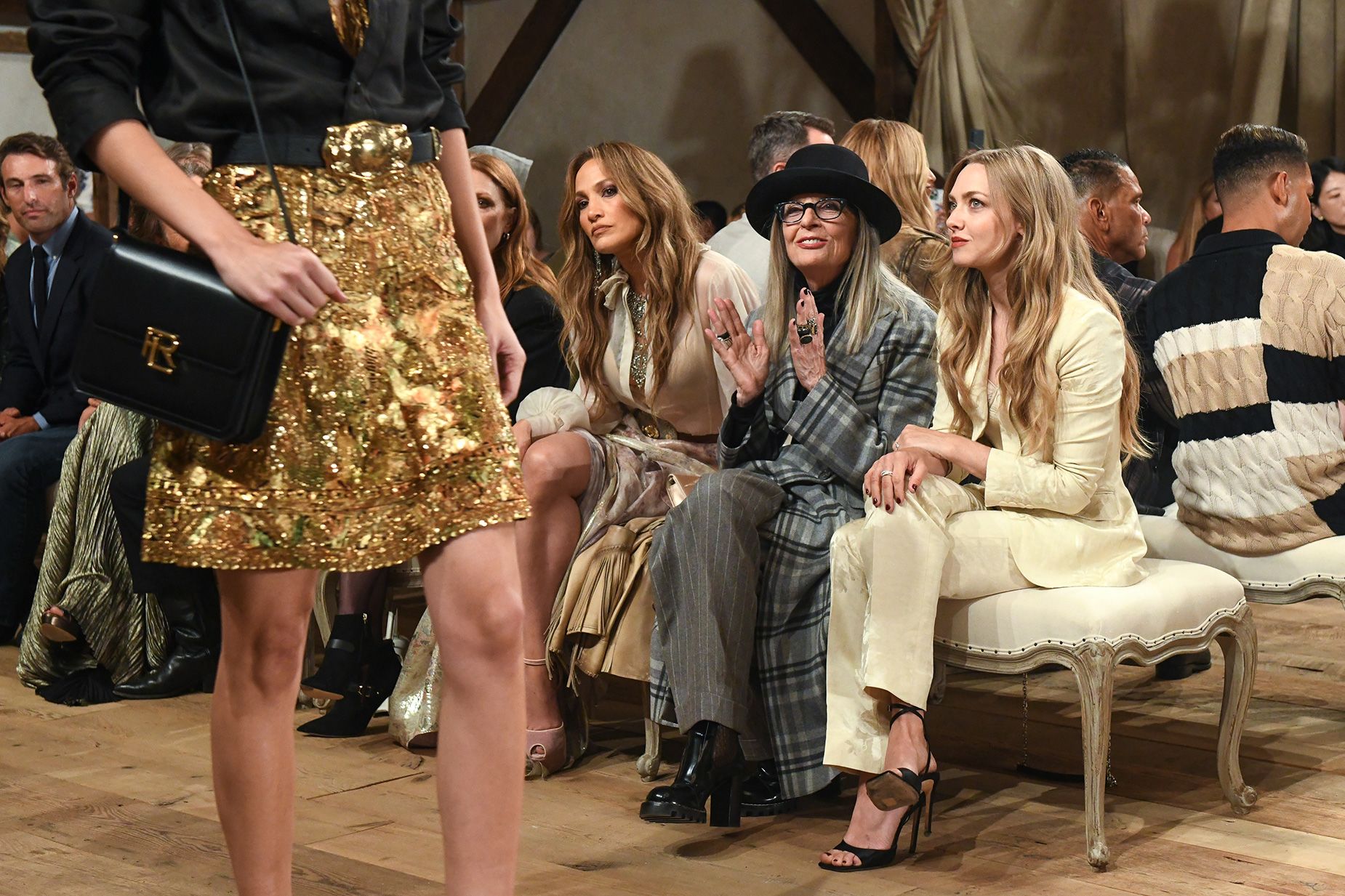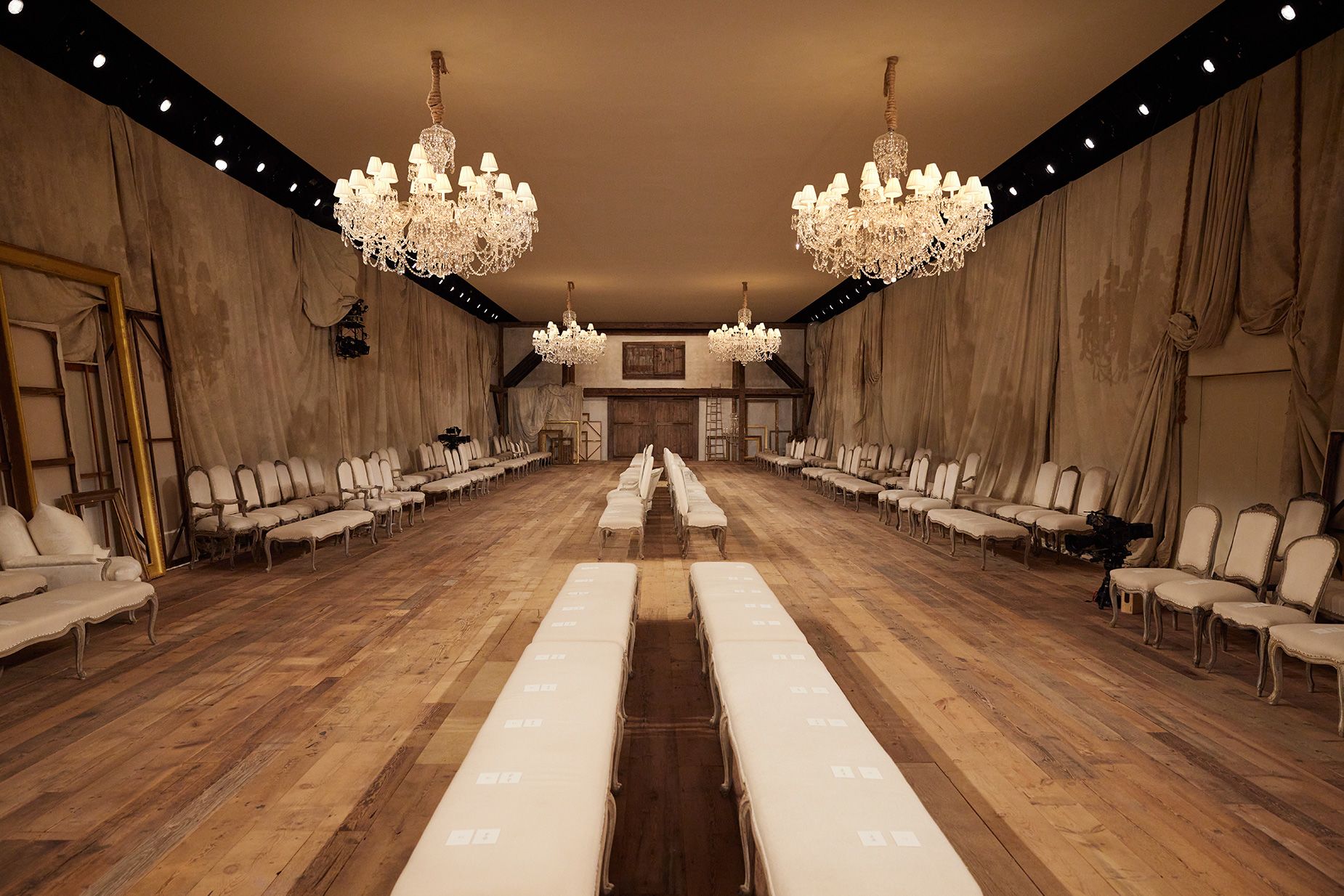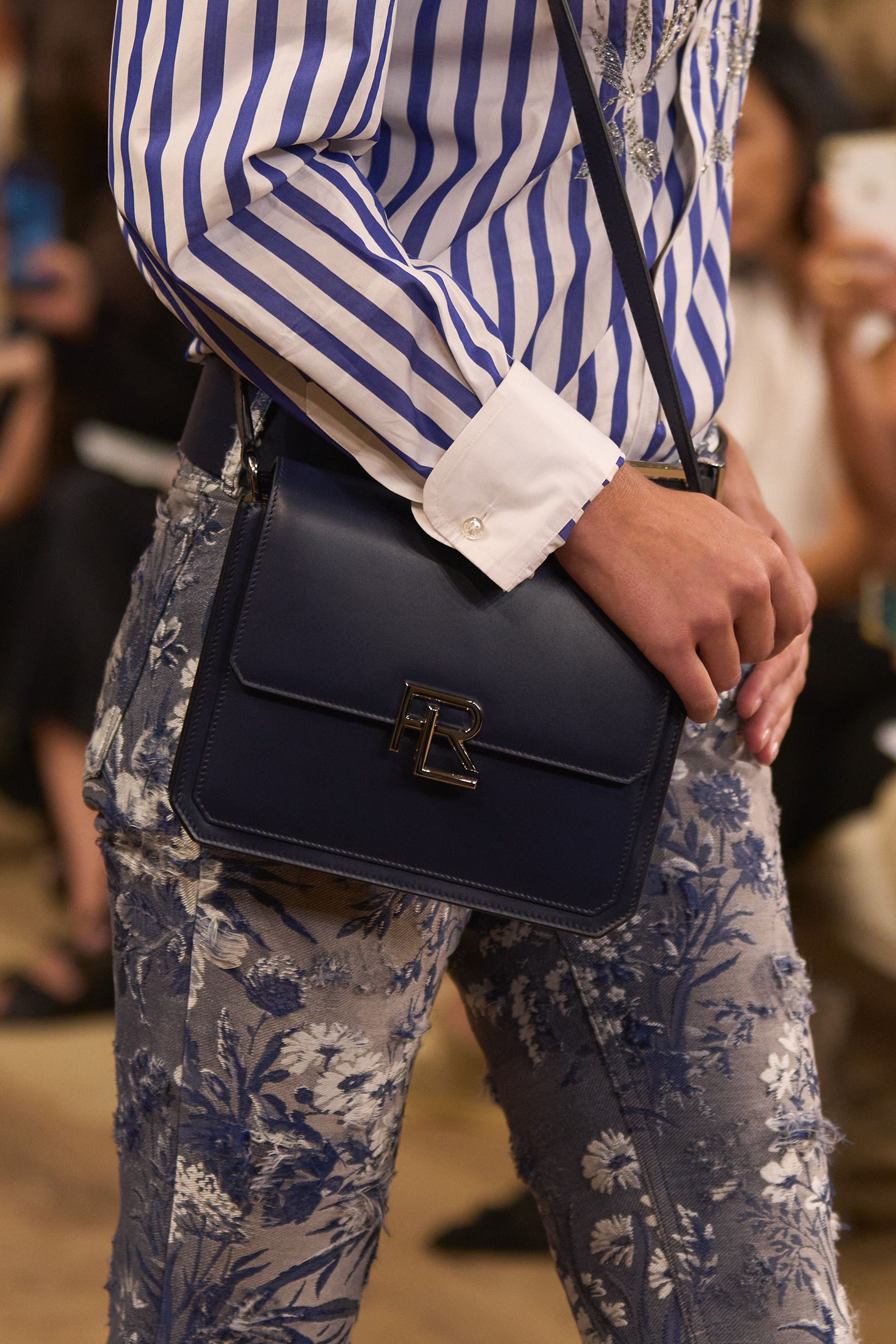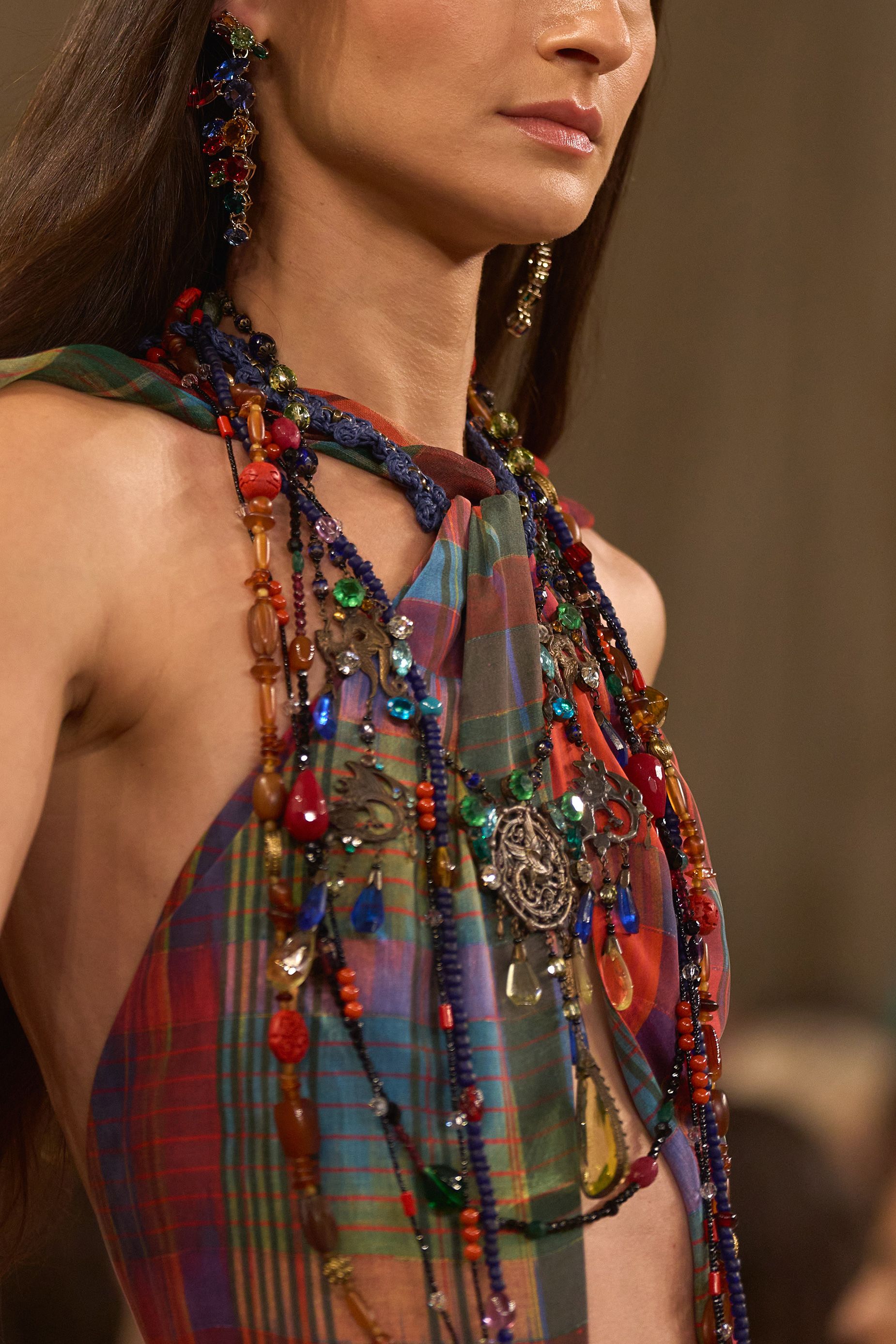Few fashion labels conjure a picturesque — and aspirational — vision of gilded Americana quite like Ralph Lauren.
The brand captures and diffuses the pillars of a certain kind of luxe lifestyle: Countryside retreats with equestrian flair, coastal getaways with cable-knit jumpers tied around necks and sand on floorboards, debonair evenings in New York or old Hollywood with sharp tailoring and classic lines, and a kind of timeless, pragmatic appeal that signals money — but doesn’t shout it.
With 56 years at the helm under his western-buckled belt, it can be said that Ralph Lauren himself was way, way ahead of his time: The kind of world-building he pioneered is now de rigueur for brands hoping to survive in a fashion industry where the values and semiotic associations of one’s products are almost more important than the products themselves. Even on the subtlest level, shoppers are buying into stories, not just sweaters or suits. In this climate, Lauren’s outlook — clairvoyance, even — has paid dividends.

“I build worlds out of dreams,” Lauren told CNN in a rare interview, via email, just days after he returned to the New York Fashion Week calendar following a four-year hiatus. “And that in itself has limitless possibilities.”
Limitless — and lucrative. The company reported revenues of $6.2 billion for the fiscal year of 2022, thanks largely to its robust women’s and men’s ready-to-wear clothing collections, children’s clothing line accessories, fragrances and home and decor ranges. Within these are subcategories: the famed Polo Ralph Lauren, which focuses on more affordable and casual clothing, Purple Label, the company’s most luxurious offering, and Polo Sport, among others.
In the past decade, the company has added popular restaurants in New York, Chicago and France to its hospitality portfolio, “because I believe in sharing my world,” Lauren explained. (Polo Bar is still one of the hottest tables in New York.) He has also launched Ralph’s Coffee, a cafe chain now found in locations ranging from Madison Avenue to Munich to Malaysia. Ralph Lauren also amplifies sponsorships that both align with its brand outlook and enhance it, one example being the tennis world, where it hosts a flagship viewing suite at both Wimbledon and the US Open.
“I started (my company) with a tie,” Lauren said of his beginnings in the business, when he famously convinced his then-employers at menswear brand Beau Brummell to let him launch his own line of neckties. “And then (I) added collections for men, women, children and home… I never had a plan. These things just happen naturally.”
When asked what additional categories he might want to bring to the Ralph Lauren universe, he added: “I never know what’s missing until it presents itself to me in a personal way.”
For Spring-Summer 2024, Lauren certainly embraced the personal. Until this week, the label had not held a show at New York Fashion Week since 2019, when it hosted a makeshift supper club alongside its runway — guests wore black-tie and Janelle Monáe performed, at one point flinging champagne into the air. (During the pandemic years, the brand activated a series of exclusive and smaller — but no less spectacular — events off the fashion calendar.)
So powerful is the brand among editors and fans alike that, simply by returning to the New York Fashion Week calendar, the label breathed new energy into the “usual” show circuit. Indeed, it turned a warehouse in the Brooklyn Naval Yard into one of the week’s most exclusive venues.
Guests arrived at the space to find it transformed into what the brand described as a “reimagined artist’s loft.” “Glimmering chandeliers, artfully draped canvas, and organic textures of reclaimed wood, plaster, and fine muslin imbue the rustic setting with a romantic spirit,” a press release explained.
The celebrities in attendance at Ralph Lauren's Spring-Summer 2024 runway show
Across nearly 50 looks, the collection embodied — and shrewdly juxtaposed — the seeming breadth of that hypothetical artist’s creativity and inspiration. It opened with a series of denim pieces, many embellished with embroidery, rhinestones and floral detailing. Similarly softened takes on suiting and a few military jackets followed, before the looks segued into a bold black and gold color palette. (At this point, a standout piece arrived in the form of a shimmering gold reimagining of the classic Ralph Lauren polo shirt, paired with a sequined black tulle maxi skirt.)
From there, a kaleidoscope of jeweled colors — topaz blue, citrine yellow, emerald green and garnet red among them — closed out the show on bias-draped gowns and fringed blouses, with a final pop of gold returning for the closing look, worn by supermodel Christy Turlington.
“All the clothes in my Spring 2024 collection are familiar, like a military jacket that I’ve always loved, but worn with gold jeans,” Lauren reflected. “I love contradictions. Fashion, to me, is not about looking back or looking forward. It’s about liking what you like.”
Following the runway show, a pair of barn-style doors within the warehouse set were opened to reveal a restaurant space that read simultaneously opulent and understated — the classic RL dichotomy, distilled again — for the evening’s dinner. This staging was inspired by Lauren’s Colorado ranch, the brand noted; the menu comprised of classic Polo Bar dishes including the classic “Ralph’s Brownie à la Mode” for dessert.
Speaking with CNN over dinner, Ralph Lauren himself demurred when asked if he considered his return to New York Fashion Week a particular homecoming moment for his brand. “I’m always in New York,” he explained, motioning to his heart. “I grew up here.”
He cited the city as “a melting pot,” and thus a home in particular for some of the themes in the night’s collection — “bohemian Americana glamour,” as he put it. In many respects, he explained, New York City is an embodiment of his mindset; a city “steeped in history, but celebrating what’s next,” he said. “It’s always about celebrating the new, and the news.”
“There are things that are always relevant because they’re not about fashion,” said Lauren over email. “(They’re) about personal style. That’s what I’ve always believed.” To this point, he highlighted classic car designs and equestrian culture cowboy dressing — both of which he loves, and both of which, while fashionable, are rooted in a sensibility that’s deeper and less fleeting than clothes alone. In this sense, he might be viewed more as a lifestyle curator and architect than a fashion designer.

Perhaps what’s helped make the brand continually resonant is that Lauren’s tastes have remained steadfast since, well, its inception. He is both devoutly true to his own aesthetic and endlessly confident of its resonance in the consumer culture space; in turn, he has helped make those preferences mainstream. Ralph Lauren’s products may gently nod to trends, but it’s always RL first, and dominantly so.
“My vision hasn’t changed. I don’t want what I created in 1967 to be old or what I sent down the runway last week to be new. I believe in timelessness,” Lauren said. “What has always stayed the same is my love of things that are authentic… The way I design never changes.”
